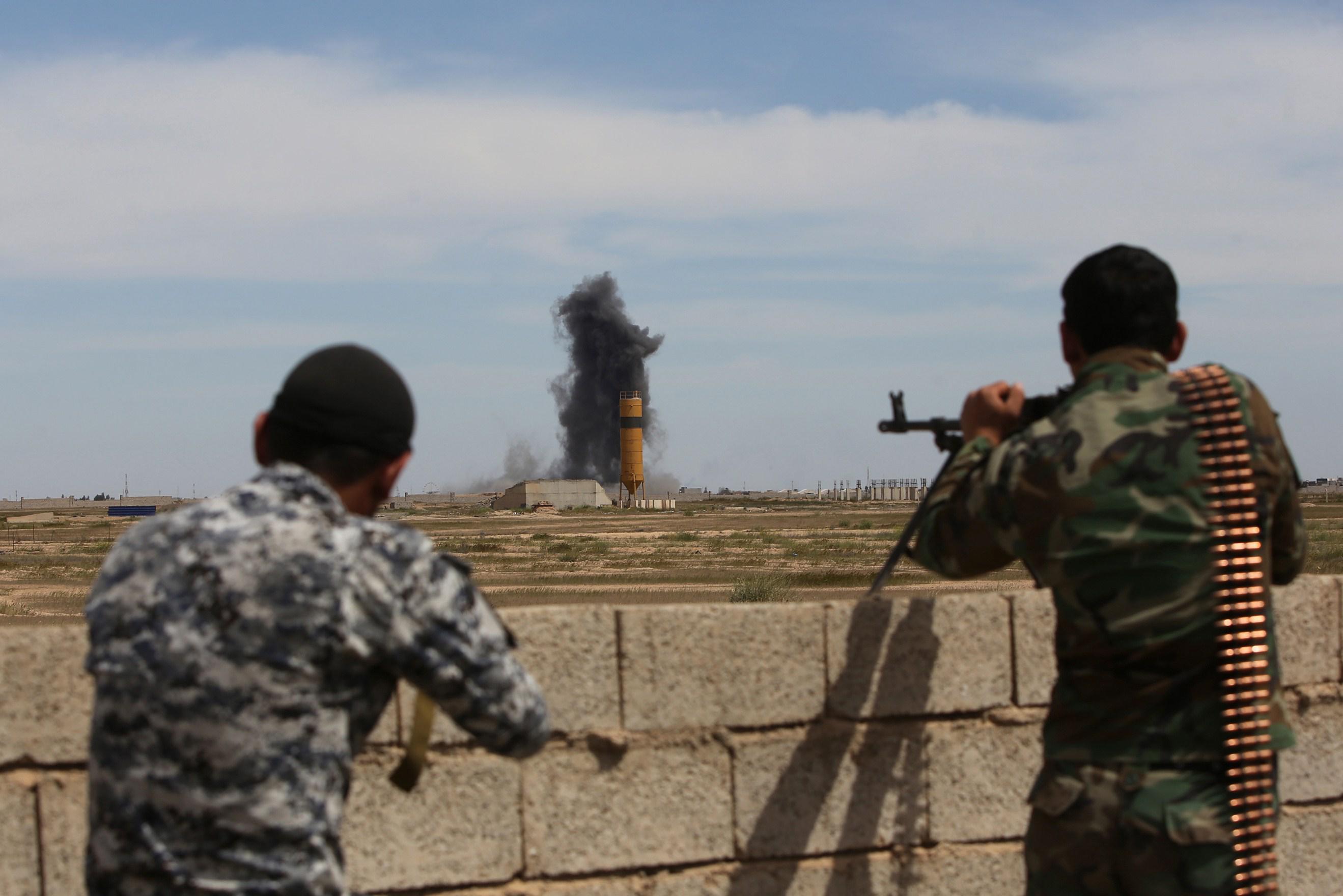Speaking in Paris today, U.S. Deputy Secretary of State Antony Blinken made the case that ISIS has seen “a lot of losses” as a result of coalition airstrikes. “We have seen a lot of losses within Daesh since the start of this campaign, more than 10,000,” Blinken said. On Monday, Gen. Hawk Carlisle, chief of the Air Combat Command, said, “We’ve taken about 13,000 enemy fighters off the battlefield” since airstrikes began.”
The difference between “more than 10,000” and “13,000” might not seem huge, until you consider that we’re talking about lives here; the disparity doesn’t bolster confidence in the precision of our figures. (The Britain-based Syrian Observatory for Human Rights puts the number of ISIS fighters killed by airstrikes at around 2,000 at the end of April.) And as several critics have pointed out, these statements are also a revival of the much-maligned practice of using enemy body counts as a measure of military progress.
Body counts got a bad name during the Vietnam War, when they became a regular feature of the nightly news in the U.S., giving what came to be seen as a distorted picture of progress against the Viet Cong. A generation of military commanders who came of age in Vietnam later expressed skepticism about using the number of enemies killed as a metric of progress, particularly in the kind of asymmetrical counterinsurgency wars the U.S. now generally fights. Gen. Norman Schwarzkopf, who commanded coalition forces in the first Gulf War, was firmly against body counts. During the early days of the war in Afghanistan, Gen. Tommy Franks famously said, “We don’t do body counts,” in response to questions about the number of Taliban and al-Qaida fighters killed. The military didn’t always adhere strictly to that policy—the number of insurgents killed in particular operations crept into news releases as the war in Iraq wore on—but it was almost never used as a measure of overall progress. Critics charged that the policy was mainly a way to downplay the massive human toll of the wars in Iraq and Afghanistan, leaving the grisly business of counting the dead to NGOs and independent researchers.
In the current conflict, the policy has been a bit muddled. In January, early in the war against ISIS, CNN reported that the U.S. Central Command was keeping a running estimate of the number of enemy fighters killed but was not releasing it. Rear Adm. John Kirby confusingly maintained that it was a “tally,” not a “body count.” When the U.S. ambassador to Iraq said that month that 6,000 ISIS fighters had been killed up to that point, then-Secretary of Defense Chuck Hagel, a Vietnam veteran, would not confirm the figure, saying, “I was in a war where we did body counts, and we lost that one.”
Body counts are a particularly dubious measure of success against ISIS considering the group’s steady supply of fighters from abroad and the number of battlefield successes it has had where it was vastly outnumbered by Iraqi forces. The contrast between the military and the administration’s sunny progress reports and the news of ISIS’s advances was already reminiscent of Bush-era pronouncements about Iraq. It’s not exactly encouraging that Obama officials are now reviving practices from Vietnam.
